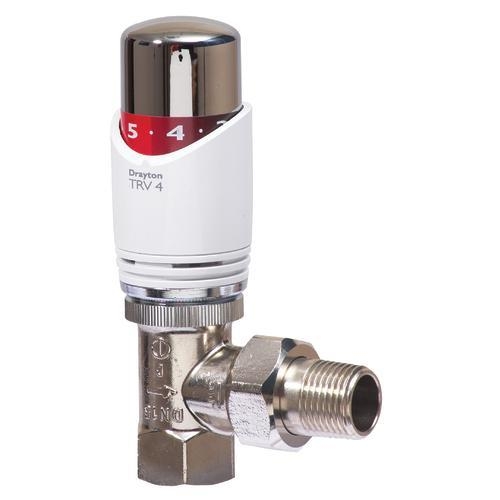How Much Does It Cost To Fit a Thermostatic Radiator Valve (TRV)?

Cost to Fit a TRV
Job | Description | Labour |
| 1 | To empty the rad. freeze the tail and fit one TRV. He will charge for half a day inc. the TRV
| £120 |
| 2 | To drain the whole system and fit TRVs “all round”, let’s say 10 in total. This is a day’s work, inc. supplying the valves | £325 |
| 3 | To fit a normal valve is the same as job 1… less the extra price of the TRV | £110 |
Information Sheet on Fitting Thermostatic Radiator Valves
TRV’s control the temperature in individual rooms. They are a cheap way of giving you a great deal of control over your heating bills.
Fitting any new valve may mean a full or partial drain down of the heating system. So it makes sense that if the heating is drained down already for whatever reason, that would be a ggod time to fit TRV’s.
Just one valve change and the engineer will probably freeze the pipe, if it’s full changeover he will drain the system down.
It happens, doesn’t it? We all feel temperature differently. All of the rooms in your house are toasty but someone wants theirs to be cooler – or hotter (if the mother-in-law is staying).
And if you do not have the luxury of my wife’s icy stare to immediately cool things down (this is usually at its most effective about 11.20 on a Friday night), you will have to open a window and allow all of that wonderful heat you paid for to simply dissipate into the cold night sky.
One way around this little problem is to fit thermostatic radiator valves (TRVs). They are relatively cheap and will act like your own little thermostat in each room.
You might be thinking that you could simply turn down the existing valves on your rads. If you do this however you will only make the room cooler (by reducing the flow of hot water into your radiator). But you won’t be able to determine just how cool and if you keep on turning normal valves they will leak because they are not designed for it.
But if that is all you want – a cold spare room that you don’t use for example, then go ahead. However, if you wish to be able to set and maintain a constant temperature, that will automatically adjust itself according to the ambient temperature, then TRVs are for you.
You may have noticed that if fitted correctly, one valve on each radiator is designed so that it won’t turn at all. This is called a “lock shield valve” and is to prevent householders from messing up the very fine balancing act the installer has set up between your radiators, to make sure they all get the same amount of hot water.
Do not get a spanner and turn this valve!
Don’t change them all
You should never change all the valves to TRVs though, they are mechanical and are neither linked to each other or to the system as a whole. It’s quite possibly therefore, especially if you have them all turned down, that a situation arises where each radiator is turned off (by its TRV) but the boiler, oblivious to this fact, keeps pumping out hot water. This water has nowhere to go, superheats and…. BANG.
That’s a bit far-fetched, there are safeguards, it won’t happen. A bathroom radiator however, with no TRV fitted, will prevent this happening because the hot water can still circulate around it. You also get your towels dried.
The ideal system will have TRVs and a room thermostat. This allows you to set a nice warm temperature for the whole house with one simple action. Unused bedrooms can then be further reduced by their TRVs.
It is also unnecessary to fit a TRV in the same room as the roomstat.
Related Jobs
Boiler Change
Boiler Service
Boiler Flue
Central Heating Pump
Central Heating Install
Cold Water Tank
Drain Cock
Draining Down
Fit/Move Radiators
Gate Valve
Header/Expansion Tank
Hot Water Cylinder
Immersion Heater
Loft Ball Cock
Outside Tap
PCB
Radiator Bleeding
Radiator Flushing
Radiator Removal
Re- Pressurise Boiler
TRV
Thermocouple
Three Way Valve
Water Main/Stopcock
FAQs 'traffic light' guide
-
What's easy about this job…
Open or CloseSimple plumbing work.
www.buildingsheriff.com
Copyright The Building Sheriff Ltd 2017